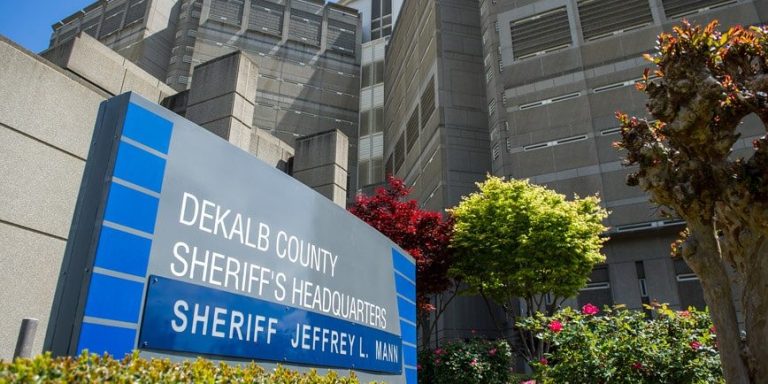There is a basic premise in photography called the Exposure Triangle. It is the combination of shutter speed, lens aperture and camera sensitivity that combine to make a good photo. Change any one of the three, and the other two must also change in proportion to ensure a quality image. Failing to make the correct adjustments leads to a poor image.
For facility maintenance managers, the Maintenance Management Triangle carries much higher stakes than a missed snapshot. Facility owners who don’t keep the balance of maintenance tasks, budgets and proper staffing can risk deferred maintenance, building failure or even life safety issues.
The legs of the Maintenance Management Triangle are the solid foundation for an operational plan that supports the entire lifecycle of the building. Each leg depends on the other to keep the maintenance program balanced and functional.
Leg 1: Budget & Costs
How much do you spend on facility maintenance? Many agencies and building owners can’t specifically define the amount spent on maintenance every year. The cost is often allocated in several different line-item budgets. Without the “total spend” picture, owners may end up spending more on staffing or maintenance tasks than they need to, or worse (and more likely), not enough.
The ultimate consequence of under-budgeted maintenance is that more money will be spent over both the short- and long-term as compared to proper budgeting. Under-budgeting maintenance means that the future budget years will suffer. In this time of living longer at the same address, most local and state governments cannot afford higher spend rates. Additionally, under-budgeting usually means more reliance on subcontractors than on-site staff, deferring critical maintenance, and/or complete or partial systems failure. Any one of these consequences leads to more spending and early failure of the building infrastructure and equipment, all of which actually increases the cost of maintenance.
Understanding how to properly fund the maintenance of your justice facilities requires a thorough understanding of the facility, its equipment, operational requirements and the long-term mission of the buildings. Understanding these concepts allows you to set budgets to appropriately fund maintenance staff (Leg 3) who perform the maintenance tasks (Leg 2) with quality and when necessary.
Leg 2: Maintenance Tasks & Management
The main thing that facility maintenance isn’t, is fixing things when they break. Corrective maintenance and repairs certainly are a part of the maintenance team’s responsibility, but the primary job is preventing things from failing in the first place.
The preventive maintenance tasks require detail in order to keep ahead of any potential problems, especially in a justice environment. Tasks like changing air filters, testing generators and lubricating locking mechanisms must be performed on a regular basis, often multiple times per year. Computerized maintenance management systems, or CMMS, are used to define and schedule preventive maintenance. Once preventive and corrective maintenance tasks are identified and scheduled, work orders from the CMMS are issued to technicians to perform the work.
The task schedules in the CMMS are used to ensure the maintenance staff is doing the right work at the right time, and before problems arise. For example, most indoor air quality regulations require air filters to be changed once a month. The CMMS may have a monthly work order for air filter changes, or the task may be grouped into a set of monthly preventive maintenance tasks for a particular air-handler unit.
Mismanaging maintenance tasks is often a direct result of improper funding or competing priorities with corrective maintenance. The primary consequence is deferred maintenance, but the result is more immediate. When the money isn’t available, maintenance tasks are performed improperly or not performed at all. This makeshift approach leads to failed equipment or systems that don’t work as designed because of constant jury rigging. The biggest risk of underperformed work, or work not done at all, is endangering the life safety of correctional officers or inmates because a security or life safety system has failed.
Leg 3: Staffing
Without the right people on the job, the right work can’t be performed. Facility maintenance personnel must be available and technically competent to perform the necessary work defined by the CMMS.
Staffing will always be the most expensive component of any maintenance program. When the money for maintenance isn’t available, the first casualty is the maintenance crew, through either fewer people on the job or less qualified workers who cost less to employ. Either case leads to underperformed or deferred maintenance.
The right staff starts with a facility manager (FM) capable of understanding jail operations and with the skills to coordinate the people and the necessary tasks. Depending on the size of the facility, the FM may also need to be a technician. The FM may also need to be a licensed craftsman (HVAC, electrician, plumber, etc.) in order to certify any work done by the maintenance team.
The rest of the staff must have the proper training, skills and certifications to keep justice operations going. This 24/7 business depends on the technicians being able to keep up with the constant flow of preventive maintenance work and applying their maintenance knowledge to recognize any problems before they occur. Under-qualified personnel will never be able to recognize when a blower motor is about to fail or see how vandalism has affected the building’s plumbing. Asking a general trades technician to perform the work of a trained craftsman is unfair to the worker, the building and the facility users.
Fully Supported Maintenance Program
The reality is that the individuals responsible for funding preventive maintenance rarely drill down into the details of facility management and rarely understand that they are only robbing Peter to pay Paul — and Paul charges a lot more.
Jail systems aren’t necessarily intuitive. Special training is needed to not only run the systems, but to also take care of them. Agencies wouldn’t dream of not implementing training or policies and procedures for correctional officers, but the same effort should be taken with the maintenance team. Keeping staff trained and up-to-date on equipment and lifecycle replacements or upgrades requires money, effort and training. Without the money to properly staff the program, maintenance tasks are performed improperly, and all three legs fail.
Spend Rate
Each facility will have its specific requirements depending on factors like facility size, age and location. Some facilities may only need three technicians. Some may cost $2 per square foot and some may cost $5 per square foot, per year. New facilities cost less per square foot to maintain than older ones. The best way to determine the right spend rate for your facility is to objectively assess its maintenance condition. A thorough assessment will help you understand what the building’s made of and will reveal where the building stands in its overall lifecycle.
Understanding the Maintenance Management Triangle is an important step in ensuring the long-term health of your justice facility. With this knowledge, you can effectively petition for the right funding and personnel to effectively manage your overall facility maintenance program.
This article originally appeared in the March/April 2016 issue of Correctional News Magazine.





